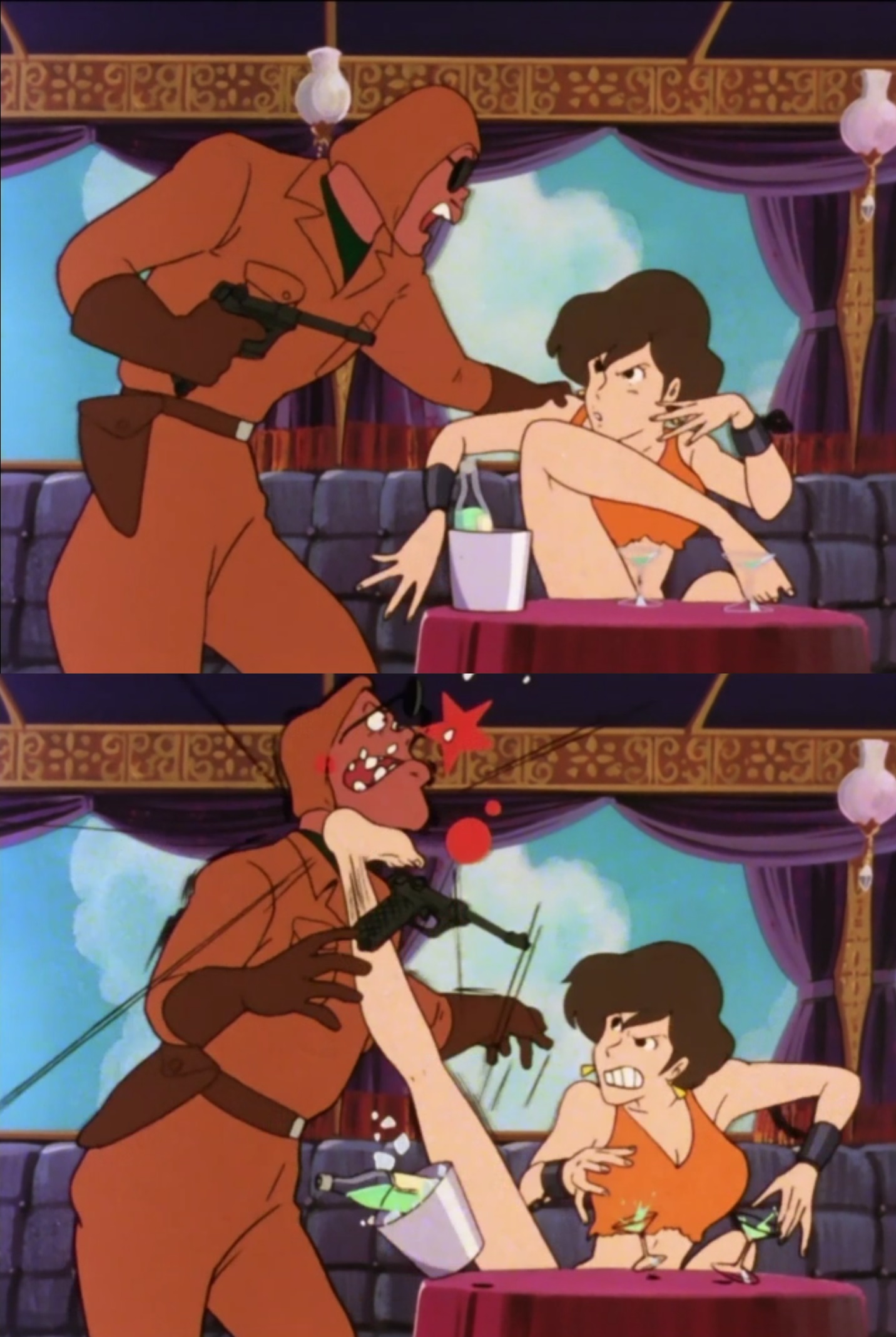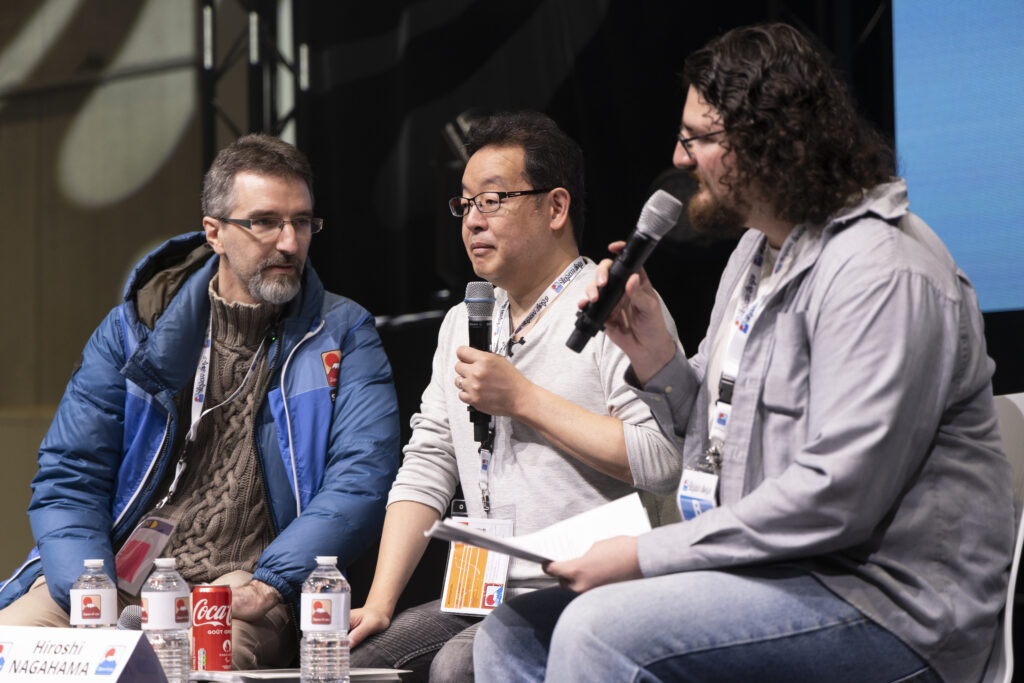Animation is an art, but it’s also a craft. And it is precisely by understanding the craft that you get to understand the art, how it works, and what it means. The goal of this series is just that: laying out some fundamental techniques and concepts of the craft that make the analysis go deeper and get more interesting.
Like our content? Feel free to support us on Ko-Fi!
What is animation ? Just drawings that move, basically (or moving drawings, but let’s not get into that yet). But how do you keep the movement from just feeling random, or from not making any sense ? There are two fundamental techniques that contribute to making it all deliberate and meaningful : that’s timing and spacing. These are the core blocks of the animated medium, and it wouldn’t be too bold to say that they’re what makes animation so special. So let’s get into them and explain it all.
To put it in abstract terms, timing is the speed at which things happen, while spacing is the rhythm at which things happen. In other words, timing is an objective quality of the motion, and spacing is more subjective and relative. But that’s still very general, so let’s get a bit technical.
As you probably know, animation is shot on 24 frames per second : each second of animation that you see is in fact made up of 24 photographs of still drawings or paintings. “Timing” means how much time each frame stays in the same position. So when something is animated “on (the) 1s”, it means that each drawing is shot just once – or a bit more than that, because there are almost never 24 new drawings per second, but more like around 16. When it’s “on 2s”, each drawing is shot twice : there will be 12 new drawings in a second. And after that you just go down : on 3s, each drawing is shot 3 times, which makes for 8 new images per second, and on 4s each drawing is shot 4 times, which means 6 new images per second.
1s and 2s are traditionally called “full animation”, while all the framerates below are called “limited animation”. These are problematic concepts that we’ll go over in another article, but it’s true that when you just take the timing into account, the difference between the two seems pretty obvious. Full animation is mostly associated with classical American animation, especially Disney. And in this cut animated by Disney legend Bill Tytla, what you get is an impressive sense of fluidity and detail. That’s the power of full animation : this cut is mostly on 1s.
Timing is very important and can partly determine the meaning of a sequence. This is what Disney animators Frank Thomas and Ollie Johnston explain in their book The Illusion of Life : each new drawing (“in-between” here) added between the two extreme poses adds a new layer of meaning.
“Just two drawings of a head, the first showing it leaning toward the right shoulder and the second with it over on the left and its chin slightly raised, can be made to communicate a multitude of ideas, depending entirely on the timing used. […]
No in betweens The character has been hit by a tremendous force. His head is nearly snapped off.
One in-between … has been hit by a brick, rolling pin, frying pan
Two in-betweens … has a nervous tic, a muscle spasm, an uncontrollable twitch
Three in-betweens … is dodging the brick, rolling pin, frying pan
Four in-betweens … is giving a crisp order, ‘Get going !’, ‘Move it !’”
And so on and so on… But what Thomas and Johnston are simultaneously describing is also the spacing – ie, the “distance” between each pose of the movement. The more in-betweens you add between the extreme poses, the closer each drawing will be to the others, and this is what creates different meanings. The following drawing by Richard Williams, from The Animator’s Survival Kit, shows the difference : the ball takes some time to hit the ground each time ; that’s timing. But between each of these extreme poses, you have to actually draw the movement of the ball, and how much drawings you put to show it, and the distance between them is spacing.

What this also demonstrates is that timing and spacing don’t exist apart from each other. The cut from Snow White I showed was very fluid and detailed ; and that didn’t come just from animating on 1s, but also because of the fact that the spacing is very close : there is very little distance between each new frame. But here’s another sequence, with a completely different effect – but that’s also on 1s. Here, the animator (Kazuhide Tomonaga) did the exact opposite from Tytla : he used very, very wide spaces between each frame to create this impression of a very sudden and unexpected movement when Fujiko bursts out in the first shot and kicks the man with a gun. Rather than slow and detailed, the motion is fast and irregular.

The same applies to lower framerates, with even more surprising results. For example, let’s look at those two cuts : the first one is by Mituo Iso and the second by Hiroyuki Imaishi. They’re both mostly on 3s, with some little bursts of 2s. So in effect, the timings can be considered to be somewhat similar. But what makes them so different (Iso is nuanced and realistic, Imaishi is energetic and flamboyant) are the spacings : Iso’s spacings are very close, while Imaishi’s are as wide as can be.
Most times, sakuga analyses mention the framerate or timing, and that’s perfectly natural. Timing is simple to notice and comment on because you just have to count the frames. But what most people forget is that timing is nothing without the spacing ; and that the two put together are what really creates meaning in animation. What these two techniques imply is that animation is never about the number of frames, or even about the quality of the individual drawings ; it’ all about how you use them.
Like our content? Feel free to support us on Ko-Fi!
You might also be interested in
Benoît Chieux, a career in French animation [Carrefour du Cinéma d’Animation 2023]
Aside from the world-famous Annecy Festival, many smaller animation-related events take place in France over the years. One of the most interesting ones is the Carrefour du Cinéma d’Animation (Crossroads of Animation Film), held in Paris in late November. In 2023,...
Directing Mushishi and other spiraling stories – Hiroshi Nagahama and Uki Satake [Panels at Japan Expo Orléans 2023]
Last October, director Hiroshi Nagahama (Mushishi, The Reflection) and voice actress Uki Satake (QT in Space Dandy) were invited to Japan Expo Orléans, an event of a much smaller scale than the main event they organized in Paris. I was offered to host two of his...
Akira stories – Katsuhiro Otomo and Hiroyuki Kitakubo talk at Niigata International Animation Film Festival 2023
Among the many events taking place during the first Niigata International Animation Film Festival was a Katsuhiro Otomo retrospective, held to celebrate the 45th anniversary of Akira and to accompany the release of Otomo’s Complete Works. All of Otomo’s animated...





Since this article is technical, I think you should correct this part:
“this cut is mostly on 1s”
That clip has multiple cuts, so it would be better to refer to it as a scene or a sequence instead.